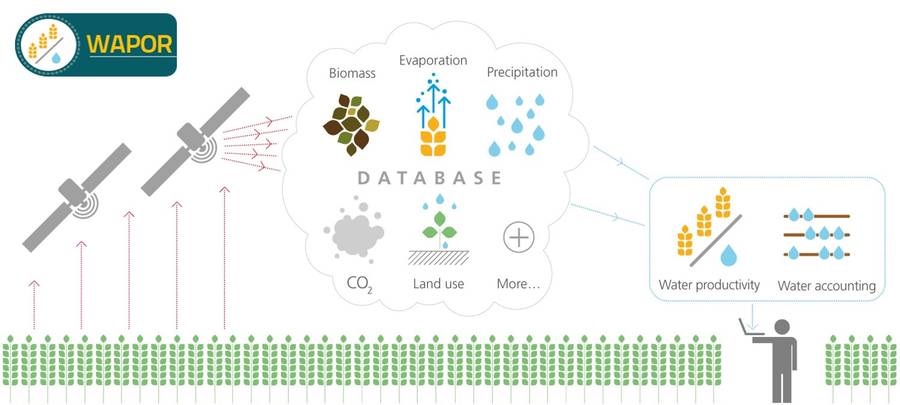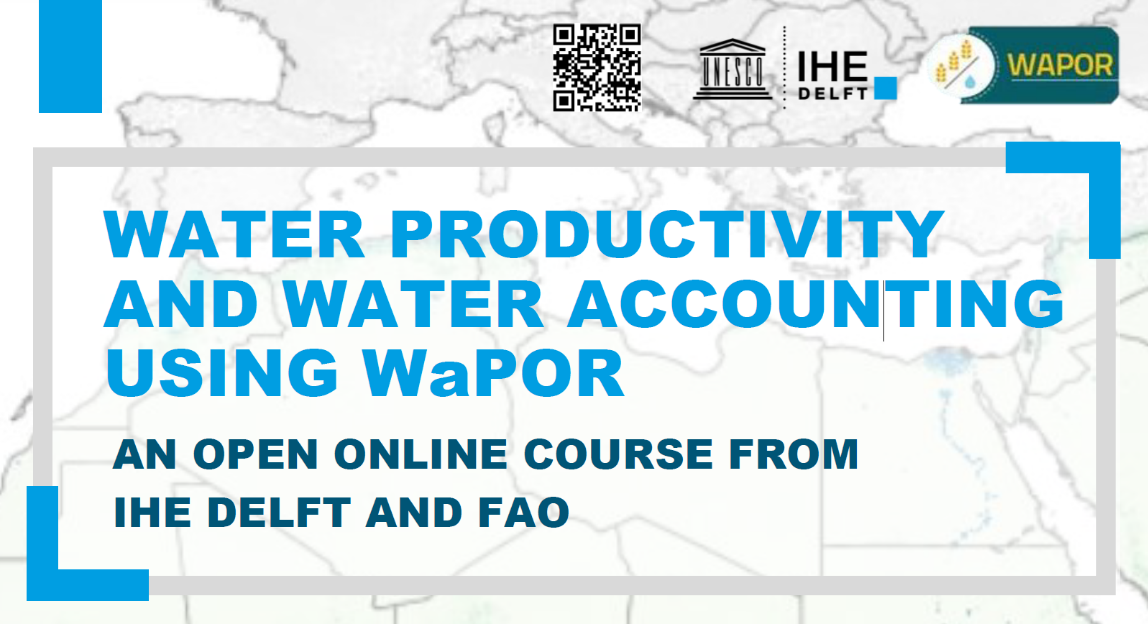Using Remote Sensing in support of solutions to reduce agricultural water productivity gaps
WaPOR phase 1 (2016-2020)
Background
Managing water resources in a sustainable manner is a major challenge for achieving food security now and in the future. As the largest user of water, managing agriculture water consumption for the highest production is essential. Exploring opportunities to increase water productivity and a careful monitoring is required. FAO has therefore developed a publicly accessible near real time database using satellite data that allows monitoring of agricultural water productivity. FAO’s portal to monitor Water Productivity through Open-access of Remotely sensed derived data (WaPOR) provides decadal information on water consumption and biomass production.
WaPOR assists countries in monitoring water productivity, identifying water productivity gaps, proposing solutions to reduce these gaps and contributing to a sustainable increase of agricultural production. At the same time, it takes into account ecosystems and the equitable use of water resources, which should lead eventually to an overall reduction of water stress.
By providing near real time pixel information, WaPOR opens the door for service-providers to assist farmers in obtaining more reliable yields and improving their livelihoods. At the same time, irrigation authorities have access to information to modernize their irrigation schemes and government agencies are able to use this information to promote and increase the efficient use of their natural resources.
The four major outputs of this project are:
- An operational database, covering Africa and the Near East to monitor agricultural water and land productivity
- An assessment of agricultural water and land productivity, productivity gaps and capacity development to close these gaps
- An assessment of the consequences and sustainability of possible increases in water productivity in agriculture
- Capacity development of stakeholders to increase water productivity sustainably
The specific IHE Delft objectives of the project are as follows:
- Design of a Measurements-Reporting-Verification mechanism for the land and productivity database developed under output 1
- Quality control of associated spatial data components such as biomass production, actual and reference evapotranspiration and rainfall
- Quantifying the role of agricultural water flows (e.g. rainfall, irrigation, evapotranspiration, drainage, and recharge) in a river basin context with competing users.
- Provide a number of alternative solutions for sustaining food production in a profitable manner, also under conditions of a changing climate with lower rainfall and higher ET rates
Outputs
IHE Delft contributes to this project by providing water accounting for 5 major basins, Litani, Jordan, Niger, Nile, and Awash Rivers (output 3). In addition, IHE Delft has performed a quality assessment of the WaPOR database using continental level datasets, country and basin level comparisons and point comparisons with field observations. IHE Delft provides input into output 2 with regard to method development, validation and field work through research projects of MSc and PhD students. In addition, IHE Delft is the lead in training activities of staff in ministries, knowledge institutes, river basin authorities, irrigation authorities, farmers organizations and others (output 4).
Water Accounting
Awash River basin - Ethiopia
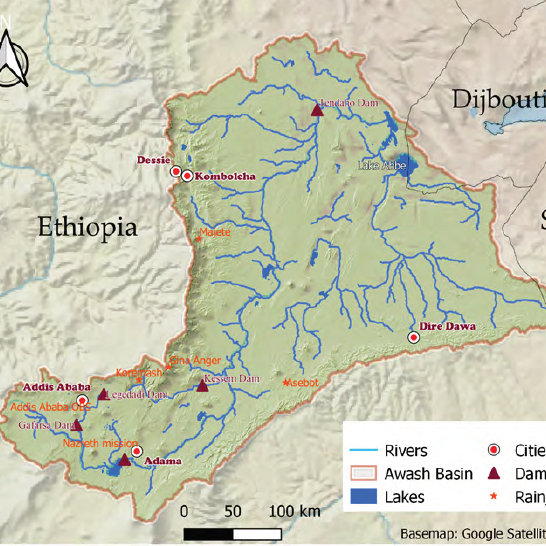 This report provides the water accounting study for the Awash River Basin in the central Rift Valley of Ethiopia which is experiencing water scarcity. The water accounting has been carried out by IHE Delft using the FAO Water Productivity (WaPOR) data portal, to gain full insights into the state of the water resources in the basin for the period from 2009 to 2018.
This report provides the water accounting study for the Awash River Basin in the central Rift Valley of Ethiopia which is experiencing water scarcity. The water accounting has been carried out by IHE Delft using the FAO Water Productivity (WaPOR) data portal, to gain full insights into the state of the water resources in the basin for the period from 2009 to 2018.
Litani River basin – Lebanon
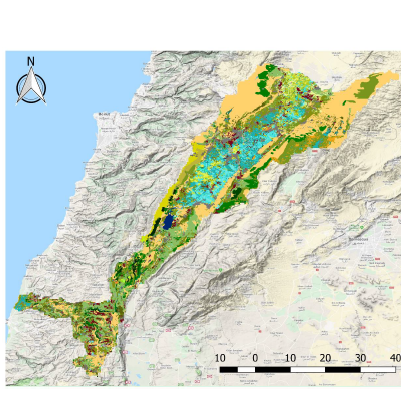 This report provides the water accounting study for Litani River basin in Lebanon, one of the key river basins in the country which is experiencing water scarcity. The water accounting has been carried out by IHE Delft using the FAO Water Productivity (WaPOR) data portal, to gain full insights into the state of the water resources in the basin for the period 2010 to 2016.
This report provides the water accounting study for Litani River basin in Lebanon, one of the key river basins in the country which is experiencing water scarcity. The water accounting has been carried out by IHE Delft using the FAO Water Productivity (WaPOR) data portal, to gain full insights into the state of the water resources in the basin for the period 2010 to 2016.
Jordan River basin – Middle East
 This report describes the rapid water accounting study for the Jordan River Basin using the Water Productivity (WaPOR) database. The water accounting has been carried out in collaboration with IHE Delft using the FAO Water Productivity (WaPOR) data portal, to gain full insights into the state of the water resources in the basin for the period from 2009 to 2018.
This report describes the rapid water accounting study for the Jordan River Basin using the Water Productivity (WaPOR) database. The water accounting has been carried out in collaboration with IHE Delft using the FAO Water Productivity (WaPOR) data portal, to gain full insights into the state of the water resources in the basin for the period from 2009 to 2018.
Nile River basin – East and Northern Africa
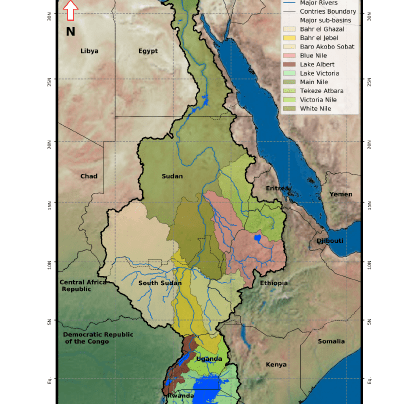 The Nile River Basin faces a huge challenge in terms of water security. With an expected doubling of the population in the basin in the next twenty-five years, water supply in the basin will be further depleted as demands for agriculture, domestic and industry continues to grow. This report describes the water accounting study for the Nile River Basin carried out by IHE Delft using the Water Productivity (WaPOR) data portal of the Food and Agricultural Organization (FAO).
The Nile River Basin faces a huge challenge in terms of water security. With an expected doubling of the population in the basin in the next twenty-five years, water supply in the basin will be further depleted as demands for agriculture, domestic and industry continues to grow. This report describes the water accounting study for the Nile River Basin carried out by IHE Delft using the Water Productivity (WaPOR) data portal of the Food and Agricultural Organization (FAO).
Niger River basin – West Africa
 The Niger River Basin is one of the largest transboundary river basins globally, covering a wide range of latitudes and longitudes. The climate over its area is diverse and the water availability is affected by high rainfall variability, with long periods of drought and damaging floods. There are many opportunities for water resources development in the basin, however, their realization maybe challenged by socio-economic limitations and lack of an overview of the state of the water resources of the basin. This report describes the water accounting study for the Niger River Basin carried out by IHE Delft using the Water Productivity (WaPOR) data portal of the Food and Agricultural Organization (FAO).
The Niger River Basin is one of the largest transboundary river basins globally, covering a wide range of latitudes and longitudes. The climate over its area is diverse and the water availability is affected by high rainfall variability, with long periods of drought and damaging floods. There are many opportunities for water resources development in the basin, however, their realization maybe challenged by socio-economic limitations and lack of an overview of the state of the water resources of the basin. This report describes the water accounting study for the Niger River Basin carried out by IHE Delft using the Water Productivity (WaPOR) data portal of the Food and Agricultural Organization (FAO).
AQUAMAPS
Data from the WA+ studies are now available on the AQUAMAPS platform hosted by FAO.
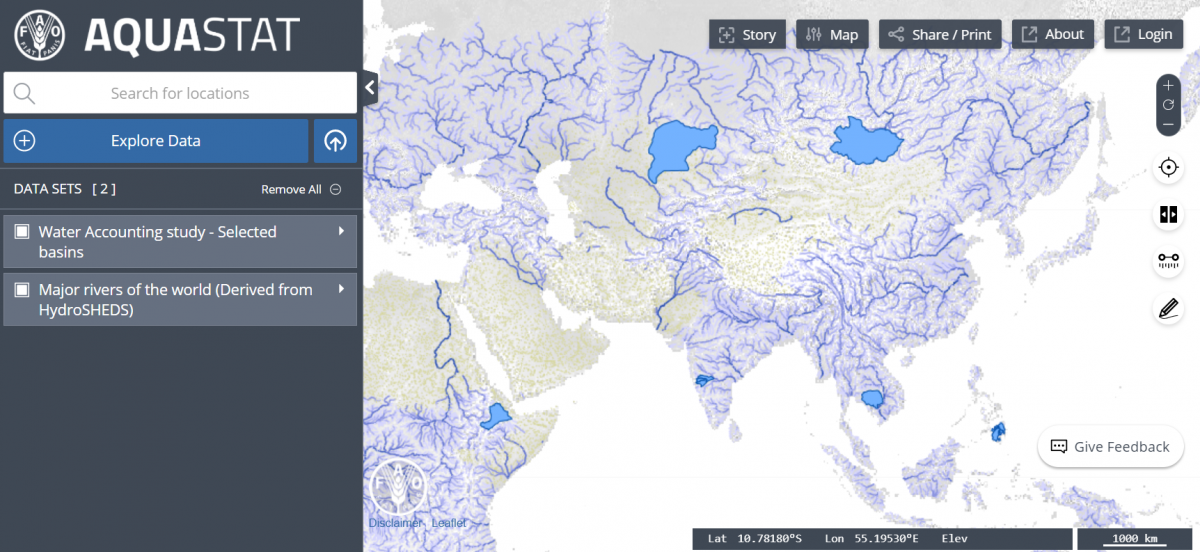
Quality Assessment
WaPOR v 1.0 Quality assessment
 This report describes the results of the quality assessment per data layer for each specific theme, as available on the FAO's data portal to monitor Water Productivity through Open access of Remotely sensed derived data (WaPOR 1.0). The quality assessment checks the consistency of the different layers and compares the individual layers to various other independent data sources.
This report describes the results of the quality assessment per data layer for each specific theme, as available on the FAO's data portal to monitor Water Productivity through Open access of Remotely sensed derived data (WaPOR 1.0). The quality assessment checks the consistency of the different layers and compares the individual layers to various other independent data sources.
Open Course Ware On Water Accounting and Water Productivity using WaPOR
available in English, French and Arabic:
WaPOR-based Rapid Water Accounting (WaPORWA)
The scripts used for the Jordan, Awash, Nile, and Niger rapid water accounts have been compiled into Jupyter notebooks and published to WAPORWA Github repository. WaPORWA consists of several Phython scripts to use WaPOR data for water accounting analyses. This repository includes scripts for collecting and pre-processing WaPOR data, running pixel-based soil-moisture balance model to account for incremental and rainfall ET, incorporating available observed outflow data, and computing fluxes in Sheet 1 - Resource Base.
